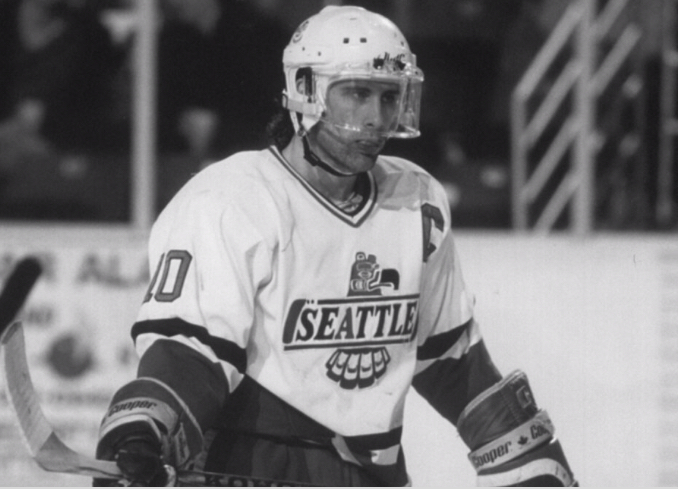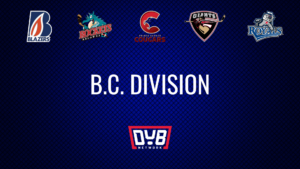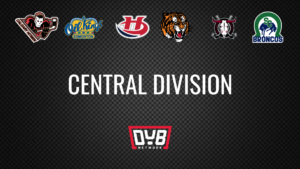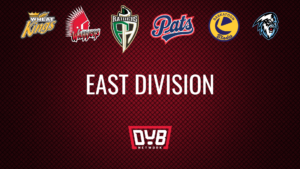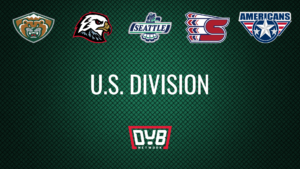Over the past few months, I’ve taken Seattle fans through a list of the 19 greatest Thunderbirds (as decided by me) in franchise history. Let’s do a quick recap of who has come so far.
19. Carl Stankowski: Rookie goaltender with the stuff to win a title.
18. Zack Fitzgerald: True heavyweight, take-on-all-comers sort of guy.
17. Alexander True: Big, versatile Dane. Oh, and he scored the single most important goal in T-birds history.
16. Errol Rausse: Breaker, goal scorer, all-around excellent hockey player.
15. Scott Eansor: Character player, motor that never quit, and fan favorite.
14. Calvin Pickard: A bright, shining star during a bleak era of T-birds hockey. This guy saw more rubber than I-5.
13. Thomas Hickey: Offensive-minded d-man turned NHL stalwart.
12. Cody Rudkowsky: Puck stopping league MVP.
11. Brendan Witt: Stay at home d-man with a bag full of knuckles.
10. Aaron Gagnon: Long-time forward and a guy you could play anywhere in the lineup.
9. Ethan Bear: This guy had a nose for the net and a shot that struck fear in the hearts of goaltenders across the league.
8. Petr Nedved: Though his time in Seattle was short, his impact was not.
7. Victor Gervais: Offensively dominant, the Simon to Goodall’s Garfunkel.
6. Turner Stevenson: Rough, rugged, and extremely talented.
5. Shea Theodore: Smooth skating with a penchant for taking over games single-handedly.
4. Ryan Walter: Seattle’s original superstar.
3. Patrick Marleau: The offensive dynamo carried the team for two years and was gone before we knew it.
2. Mathew Barzal: The speedy, creative forward that led Seattle to the promised land.
I think it is fair to say that the next and final man on our list needs no introduction. Was there ever even a question who was going to be number one? It’s Glen Goodall, because of course it is.
Goodall was born in Fort Nelson, BC, and relocated to Thompson, Manitoba, at the age of nine. Goodall’s talent was clear early in his childhood playing in Thompson. Seattle brass took notice of Glen and monitored his progress. Feeling confident in the youngster’s ability, he was placed on Seattle’s protected list at age 12, as there was no bantam draft at the time. By the time he had reached 14, he was invited to attend the Breakers training camp; the rest, as you know, is history.
His first season in the WHL came in 1984-1985. At the age of 14, Goodall’s talent was clear, as he could play alongside the much older players with little problem. He appeared in 59 games that season, contributing an impressive 26 points (5G, 21A) as just a 14-year-old. Goodall was just getting started, however, and the best was yet to come. Over the off-season, the Breakers were sold to new ownership and re-branded as the Seattle Thunderbirds.
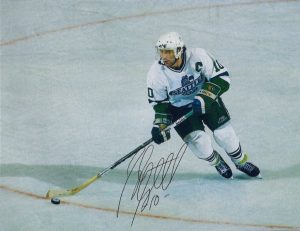
In 1985-1986, Glen improved his offensive statistics. Playing in 65 games, he scored 13 goals and added 28 assists for 41 points as a 15-year-old. Seattle played four playoff games in 1986, and Glen managed to contribute a goal and an assist. His development over his first two seasons suggested that there was more to be seen from Glen, and his 16-year-old season would be his coming-out party.
With two full seasons of WHL hockey under his belt, Goodall was ready to take the next step and truly display his offensive dominance. From scoring a modest 13 goals just a season prior, Goodall potted a gaudy 63 goals to go along with 49 assists for 112 points. Size was always a question with Goodall — if he could succeed in the Dub as an undersized forward in a big man’s game. Whatever questions people had about him prior to 1987 were erased with his incredible season.
By 1987-1988, Glen had established himself as one of the premier forwards in the Western Hockey League, and he continued his tear through the league. He picked up right where he left off the previous season, playing in 70 games for the Thunderbirds. His goal total did regress a little, as he scored just 53 goals (just 53 haha) but had his highest assist total to date, setting up 64 goals for a total of 117 points. His play even caught the attention of the Detroit Red Wings as they selected him in the 10th round of the 1988 NHL entry draft.
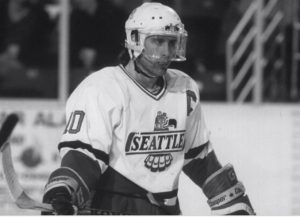
In 1988-1989, Goodall showed no signs of slowing down, and with him being a prospect of an NHL franchise, he continued to light up the league. Appearing in 70 games that year, Glen produced another 50-goal season, scoring 52 times while adding 62 assists for 114 points. Unfortunately, despite Goodall’s individual success, the team still did not qualify for the postseason. Seattle fans were desperate for a winner. After the WHL season, Goodall got a taste of the next level. He skated in nine games for the Flint Spirits of the International Hockey League, scoring five goals and four assists for nine points. He had unfinished business in Seattle, however.
1989-1990 was a season to remember in Seattle. In addition to the established Goodall, the Thunderbirds also had the likes of Victor Gervais, Turner Stevenson, Lindsay Vallis, goaltender Danny Lorenz, and rookie import phenom, Petr Nedved. Goodall was named the team’s captain, and he exploded for the best season in his WHL career. Previous career highs in goals and points were absolutely shattered as he scored 76 goals and set up 87 more for a ridiculous 163 points. You read that correctly — 163 points in a single season where he only played in 67 games. Seattle posted a record of 52-17-3, second only to the Don Hay-helmed Kamloops Blazers. During the season, Seattle — a team that struggled to fill the Mercer Arena — were moved to the Seattle Center Coliseum to accommodate the hockey fever that had struck the Pacific Northwest. Seattle regularly played in front of crowds that were 12,000 strong. Seattle took on the Tri-City Americans in the first round of the playoffs, which included an infamous brawl that took place behind the Tri-City bench involving TC players and Seattle fans. The Thunderbirds dispatched the Americans five games to one (back in 1990, the west played best-of-nine series). Seattle then met Kamloops in the West Division Final and lost five games to one. During the postseason, Goodall was on fire, scoring seven goals and adding seven assists for 14 points. Seattle had the true misfortune of rising to prominence at the same time as one of the best true dynasties in Major Junior history in Kamloops. The Blazers went on to win the WHL title that year. Goodall had the honor of being named the WHL’s most valuable player, earning the “Four Broncos Memorial Trophy”.
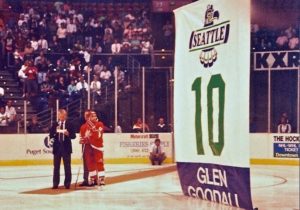
Goodall spent the next three season bouncing around the minor professional leagues in North America, including the AHL, ECHL, and the IHL. Goodall’s small stature was likely the reason for his lack of success professionally in North America, but that did not prevent him from going on to have a successful pro career; it just happened overseas in Germany. Goodall played 17 seasons in Germany, between Germany 3rd and 2nd division, before finding a permanent home in the DEL with ERC Ingolstadt in 2002. Goodall retired from hockey in 2010 and has made trips back to Seattle. Goodall’s #10 was retired ahead of the 1990-1991 season, when the Detroit Red Wings played a preseason game in Seattle. It remains the only number retired by the organization.
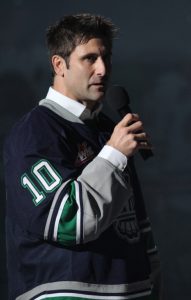
Glen Goodall remains the benchmark for all other Thunderbirds forwards. He is without question the greatest the franchise has ever seen and will likely ever see. Though some have come close, with our last entrant even leading Seattle to a league title, Goodall’s time in Seattle put the franchise on the map and showed what being an elite star in the league really means. Goodall is the all-time leader in goals (262), second all-time in points (573), and the all-time leader in games played (399). For my money, Goodall is the greatest WHL player of all time. Going back and watching footage of his WHL career, it is clear how much better than the average competition he was, and the fact that he did all the things he did in a Seattle Thunderbirds sweater should be a great point of pride for all Seattle fans.

